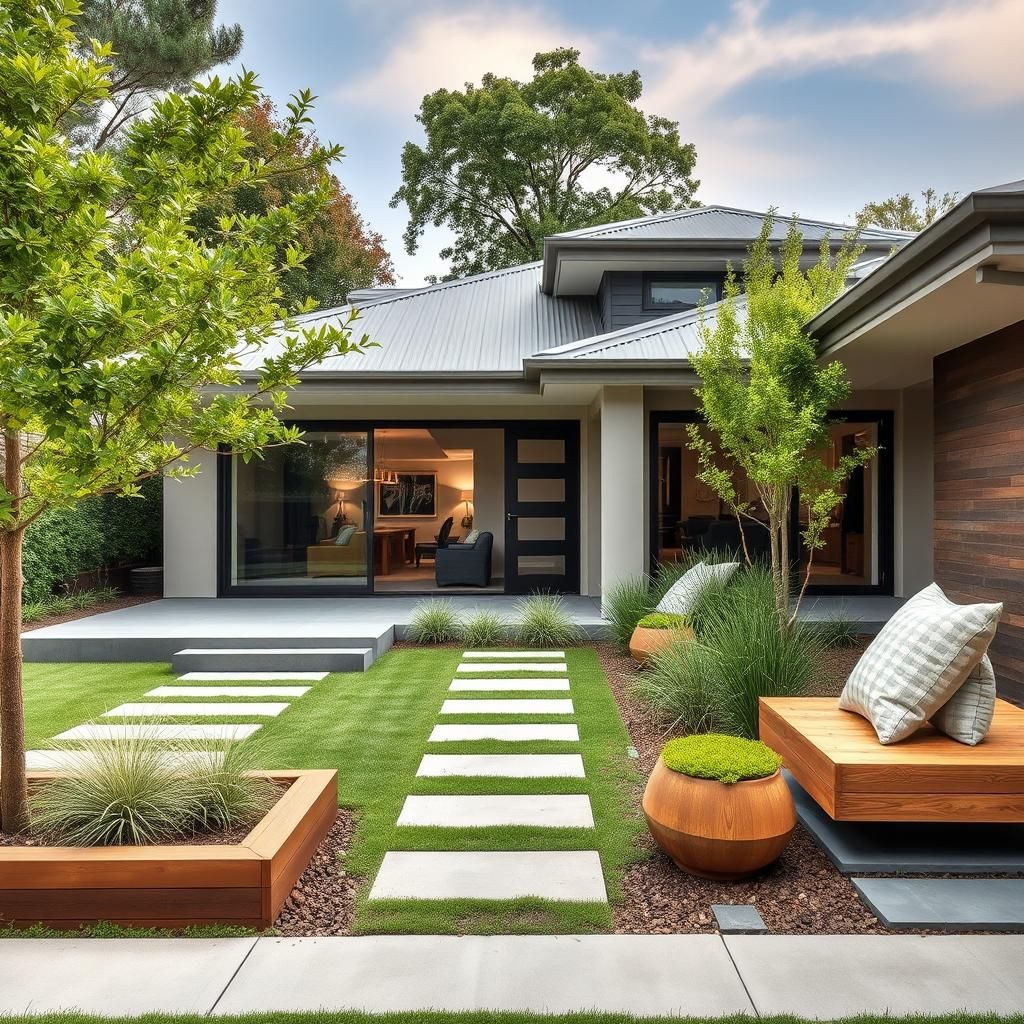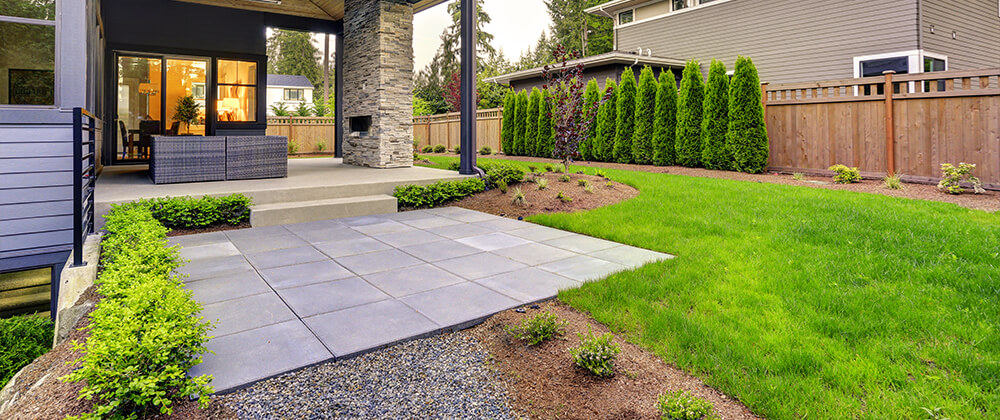How Much Does It Cost to Landscape a New House in Australia? A Comprehensive Guide to Budgeting and Planning

Landscaping a new home in Australia can significantly enhance its curb appeal and overall value. However, understanding the costs involved is crucial for effective budgeting and planning. From planting trees and shrubs to installing pathways and outdoor lighting, the expenses can vary widely based on the design choices, materials, and labor involved. This comprehensive guide aims to break down the factors influencing landscaping costs, provide realistic budgeting tips, and outline the steps necessary to create a beautiful outdoor space that complements your new house. By the end, you’ll be equipped with the knowledge to make informed landscaping decisions.
How Much Does It Cost to Landscape a New House in Australia?
Landscaping a new house in Australia can vary greatly in terms of cost, influenced by factors such as the size of the property, the complexity of the landscape design, and the materials chosen. Generally, homeowners should anticipate expenditure ranging from $5,000 to $30,000 or more, depending on whether they require simple garden beds and turf or more elaborate features like patios, pathways, and irrigation systems. Additionally, hiring a professional landscaper can add to the overall cost, yet it often ensures a well-executed design that enhances the property’s aesthetic and value.
Factors Influencing Landscaping Costs
Several factors contribute to the overall cost of landscaping a new home, including the size of the area to be landscaped, the type of plants and materials selected, and the complexity of the design. For instance, small plots may be less expensive to landscape, while larger properties might require extensive planning and execution, escalating costs significantly. Proper planning and budgeting for these factors are essential to avoid unexpected expenses.
Typical Landscaping Features and Their Costs
Homeowners can expect to pay varying amounts depending on the features they wish to include in their landscaping projects. For example, simple grass installation can cost around $1,500, while more intricate features like rock gardens may range from $2,500 to $5,000. Additional costs may arise from items like patios (approximately $3,000 to $15,000) and retaining walls, which can add significant visual appeal and functionality to an outdoor space.
DIY vs. Professional Landscaping
Choosing between DIY landscaping and hiring a professional can significantly impact costs. While DIY can save money, it may also lead to issues if the homeowner lacks experience, potentially resulting in additional costs to rectify mistakes. In contrast, professional landscapers typically charge between $50 to $150 per hour, but their expertise often results in a more polished and efficient outcome. An initial investment in a professional service could save money long-term through increased property values and design longevity.
Regional Cost Variations
Landscaping costs can also differ significantly across various regions of Australia. Urban areas like Sydney and Melbourne often experience higher costs due to increased labor rates and demand for landscaping services, while rural areas might present more affordable options. Understanding regional price trends can help homeowners budget more effectively and seek options that fit their financial parameters.
Budgeting Tips for Landscaping
To manage landscaping expenses, homeowners should consider creating a detailed budget prior to starting the project. This can include obtaining multiple quotes from landscapers, prioritizing essential features, and allowing for contingency funds to cover unexpected costs. Engaging in research about plants and materials can also help identify options that are both aesthetically pleasing and cost-effective, ensuring the landscaping remains within planned expenditures.
| Feature | Estimated Cost |
|---|---|
| Grass Installation | $1,500 |
| Rock Garden | $2,500 - $5,000 |
| Patio | $3,000 - $15,000 |
| Retaining Wall | Varies |
| Landscaper Hourly Rate | $50 - $150 |
How much does landscaping cost for a new house?

The cost of landscaping for a new house can vary significantly based on several factors. On average, homeowners can expect to pay between $1,000 and $10,000 for landscaping services. However, the overall price can be influenced by the size of the yard, the complexity of the design, the choice of plants, materials, and local labor costs.
Factors Affecting Landscaping Costs
Several key factors play a significant role in determining the total cost of landscaping for a new home. These include:
- Size of the Property: Larger properties generally require more plants, materials, and labor, which increases overall costs.
- Design Complexity: Intricate designs with multiple elements, such as pathways, ponds, or retaining walls, can be more expensive to execute.
- Plant Selection: The type of plants chosen can greatly affect the budget; native or drought-resistant plants may cost less but have varying aesthetic impacts.
Average Landscaping Costs by Region
Geographic location significantly impacts landscaping costs due to differences in climate, labor rates, and availability of materials. The average costs can vary as follows:
- East Coast: Landscaping costs can range from $5,000 to $10,000 due to higher labor and material expenses.
- West Coast: Similar to the East Coast, the average costs are approximately $6,000 to $12,000 largely influenced by climate considerations.
- Midwest: This region tends to have lower costs, ranging from $3,000 to $7,000, as labor prices are generally more affordable.
DIY vs. Professional Landscaping
Deciding whether to handle landscaping tasks yourself or hire professionals can greatly affect expenses. The benefits and considerations are:
- Cost Savings: DIY landscaping can significantly reduce labor costs, but can lead to potential pitfalls if you're inexperienced.
- Time Investment: Professional services can save time but require a larger upfront investment; DIY might require more time but can be rewarding.
- Quality of Work: Professionals often provide superior design and execution, resulting in better long-term value.
Common Landscaping Features and Their Costs
Different features can be included in a landscaping plan, each with its own associated costs. Common features include:
See also:
- Patios and Decks: Constructing an outdoor space can range from $2,000 to $7,000, depending on materials and size.
- Plants and Flowers: A good quality plant setup can vary, costing between $300 and $1,500, based on selection and quantity.
- Irrigation Systems: Installing a drip or sprinkler system can cost approximately $1,800 to $3,500, essential for maintaining plant health.
Long-term Landscaping Maintenance Costs
After the initial investment in landscaping, ongoing care is crucial for maintaining the beauty and function of outdoor spaces. Maintenance cost factors include:
- Regular Maintenance: Hiring professionals for monthly maintenance can range from $100 to $500, depending on yard size and complexity.
- Seasonal Changes: Certain seasons may require additional care or changes, which can incur costs averaging $200 to $1,000 annually.
- Replacement Costs: Over time, some plants may need replacement, averaging $100 to $500, depending on variety and health.
How much does a landscape design cost in Australia?

The cost of landscape design in Australia can vary significantly based on several factors, including the scope of the project, the design complexity, and regional differences. On average, homeowners can expect to pay between $50 to $250 per hour for professional landscape design services. For complete landscape design packages, costs typically range from $3,000 to $10,000 or more for larger projects. Here are some factors that influence the overall costs:
Factors Affecting Landscape Design Costs
The costs associated with landscape design can fluctuate based on various contributing elements. Key factors include:
- Project Size: Larger areas require more time and resources, leading to elevated costs.
- Design Complexity: Intricate designs involving unique features tend to be pricier.
- Location: Prices vary by region; metropolitan areas generally have higher rates.
Types of Landscape Design Services
Different types of services are available, each with varying price points. The most common services include:
- Consultation: Initial meetings can range from $50 to $200, based on the professional's experience.
- Master Planning: Comprehensive plans typically start at $1,500 and can exceed $10,000 for extensive projects.
- Project Implementation: Actual construction and installation involving different trades likely add additional expenses.
Regional Variations in Pricing
Pricing for landscape design can differ among various Australian regions. The most notable considerations are:
- Urban vs Rural: Urban areas often experience higher demand, impacting cost.
- State Differences: Different states may have varying average rates due to local market conditions.
- Seasonal Variations: Costs may fluctuate based on the season and contractor availability.
Budgeting for Landscape Design
When planning for landscaping costs, it's essential to consider your overall budget. Important budgeting tips include:
- Set a Clear Budget: Determine how much you are willing to spend upfront.
- Prioritize Needs vs Wants: Distinguish between essential features and additional comforts.
- Allow for Contingencies: Set aside 10-20% for unexpected expenses during the project.
Choosing the Right Landscape Designer
Finding the right landscape designer can significantly impact both your costs and the quality of your project. Key points to consider include:
- Experience: Always check the designer's portfolio to gauge their expertise.
- Reviews and References: Look for testimonials from previous clients to inform your decision.
- Consultation Fees: Clarify initial consultation fees early on to avoid surprises.
Why is landscaping so expensive in Australia?

Landscaping in Australia is often perceived as expensive due to several factors that influence the cost. Understanding these elements can provide insight into why prices vary significantly across different regions and types of projects.
Labor Costs
Labor costs in Australia are among the highest in the world, which significantly impacts the overall expense of landscaping projects. Skilled tradespeople, such as landscapers, often receive higher wages due to Australia’s strong labor rights and minimum wage laws.
- High Wages: Landscapers and garden maintenance professionals earn competitive salaries that reflect their skill level and experience.
- Training and Certification: Many landscapers invest time and money in training and obtaining certifications, contributing to increased service costs.
- Demand for Skilled Workers: The demand for landscaping services often exceeds the supply, driving prices higher due to market dynamics.
Material Costs
The cost of materials used in landscaping is another significant factor. In Australia, the price of common landscaping materials can be influenced by their availability and the distance they need to be transported.
- Shipping and Import Fees: Many materials, such as decorative stones and certain plants, are imported, which incurs additional shipping costs.
- Local Sourcing: While local materials may reduce costs, they can sometimes be limited in availability, further inflating prices.
- Quality of Materials: Australians often prefer high-quality, sustainable materials, which tend to be more expensive than standard options.
Regulations and Compliance
Australia’s strict regulations concerning landscaping and construction also contribute to higher costs. Compliance with local laws and environmental regulations can add to the complexity and expense of a project.
See also:
- Environmental Standards: Many areas require eco-friendly practices, which can increase both labor and material costs.
- Permitting Fees: Obtaining necessary permits for landscaping projects can incur substantial application and processing fees.
- Insurance Requirements: Landscaping companies often carry higher liability insurance due to the risks involved, which can be passed on to the consumer.
Climate and Geography
The diverse climate and geography of Australia play a crucial role in determining landscaping costs. Different regions may require specialized knowledge and materials to ensure the success of landscaping projects.
- Climate Adaptability: Landscapers must choose plants and materials that can withstand specific climatic conditions, which may limit options and increase costs.
- Geographical Diversity: Various terrains, including arid zones and coastal areas, may require unique landscaping solutions, affecting pricing.
- Water Regulations: With water scarcity in many parts of Australia, landscaping that conserves water can be more expensive to design and implement.
Market Dynamics
The landscaping market in Australia exhibits unique characteristics that influence pricing. Understanding how supply and demand interact can shed light on pricing trends.
- Seasonal Demand: Landscaping services are often in higher demand during specific seasons, leading to price fluctuations based on timing.
- Competitive Market: With many companies vying for clients, pricing strategies can vary widely, influencing overall costs.
- Luxury Market Segment: A significant portion of the landscaping market caters to high-end clients, which can raise the general perception and cost of landscaping services.
What landscaping adds the most value to a home?

Landscaping can significantly enhance the value of a home by increasing curb appeal, creating functional outdoor spaces, and promoting a healthy environment. Various landscaping features can contribute to a higher property value, including the selection of plants, hardscaping elements, and outdoor living areas. Potential buyers often look for homes that not only have expansive interior spaces but also attractive exteriors. Here are several landscaping elements that add the most value to a home.
Curb Appeal Enhancements
The first impression is crucial, and enhancing the curb appeal can greatly affect a home’s marketability. Curb appeal encompasses the visual aspects of a property seen from the street. Simple landscaping improvements can attract potential buyers.
- Fresh Lawn: A well-maintained, green lawn looks inviting and signifies a cared-for property.
- Colorful Flower Beds: Adding vibrant flower beds can create a welcoming atmosphere and draw the eye.
- Clean Walkways: Well-defined and clear pathways using decorative stones or pavers set a professional look and invite exploration.
Outdoor Living Spaces
Creating functional outdoor living spaces adds significant value by extending the usable area of a home. Buyers often seek spaces for relaxation, entertainment, and recreation.
- Decks and Patios: These spaces provide areas for outdoor dining and entertaining, making them desirable features.
- Outdoor Kitchens: Having a full outdoor kitchen can be a major selling point for homebuyers who love entertaining.
- Fire Pits: Outdoor fire pits offer a cozy gathering spot, increasing the attractiveness of the backyard.
Native Plantings and Sustainability
Using native plants in landscaping promotes sustainability and requires less maintenance while supporting local ecosystems. Buyers appreciate environmentally friendly options that reduce water usage and promote biodiversity.
- Low-Maintenance Plants: Selecting native plants that thrive in the local climate means lower upkeep requirements.
- Pollinator Gardens: Gardens that attract butterflies and bees help sustain the local environment, appealing to eco-conscious buyers.
- Rain Gardens: These gardens mitigate stormwater runoff and highlight a commitment to sustainability.
Fencing and Privacy Features
Adding fencing and other privacy-enhancing features can not only improve security but also create a more comfortable and secluded outdoor environment. These elements can make a home more attractive to families and individuals seeking their personal space.
- Privacy Fences: Tall, solid wooden or vinyl fences can create a serene retreat in the backyard.
- Hedgerows: Planting hedges along property lines offers natural barriers and enhances aesthetics.
- Trellises and Arbors: Adding these features can create defined spaces and room for climbing plants, promoting both beauty and seclusion.
Irrigation and Maintenance Systems
Efficient irrigation systems save time and conserve water, making them attractive features for potential buyers. Such systems provide an appealing advantage in landscape maintenance.
- Drip Irrigation: This system minimizes water wastage and provides targeted moisture directly to the plant roots.
- Sprinkler Systems: Automating watering schedules can relieve homeowners of the burden of manual watering.
- Low-Voltage Landscape Lighting: Installing lighting can enhance the beauty of the landscape at night and improve safety, making the home more inviting.
Questions from Our Readers
How much should I budget for landscaping a new house in Australia?
The cost of landscaping a new house in Australia can vary widely, typically ranging between AUD 5,000 to AUD 50,000 or more depending on factors such as the size of the yard, design complexity, and materials used. It’s essential to assess your specific needs and preferences to establish a more accurate budget.
What factors influence the cost of landscaping?
Several factors influence landscaping costs in Australia, including the size of the land, type of plants and materials selected, the extent of landscaping work required, and labor charges. Additionally, features like patios, decking, and water features can significantly increase overall expenses.
Is it worth investing in professional landscaping services?
Can I do my landscaping on a budget?


If you want to read more articles like How Much Does It Cost to Landscape a New House in Australia? A Comprehensive Guide to Budgeting and Planning, we recommend you check out our Landscaping category.
Leave a Reply
Related Articles